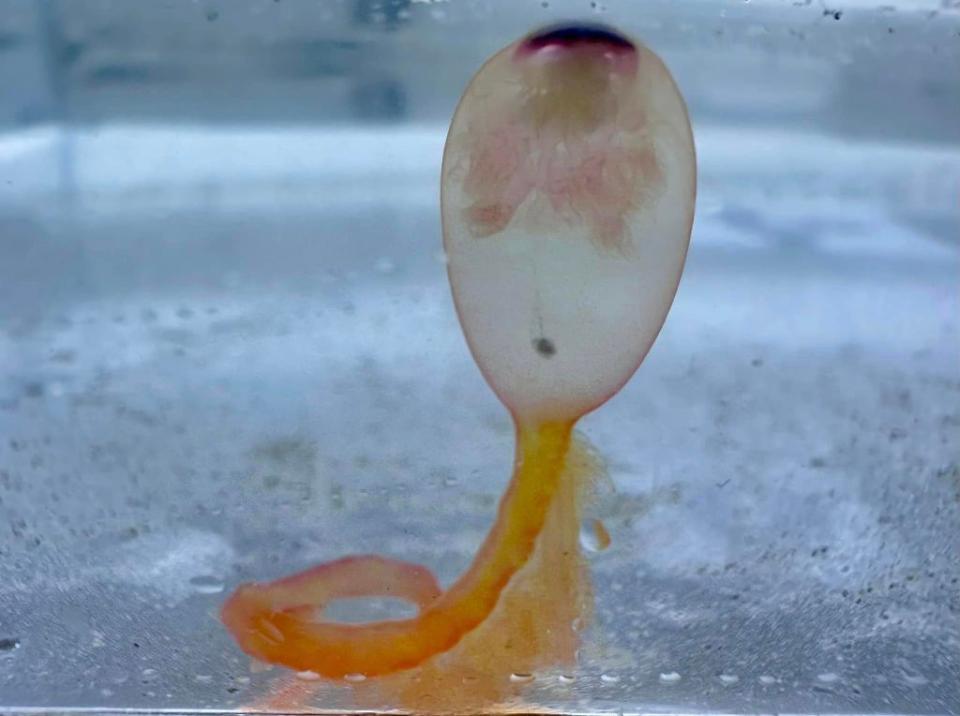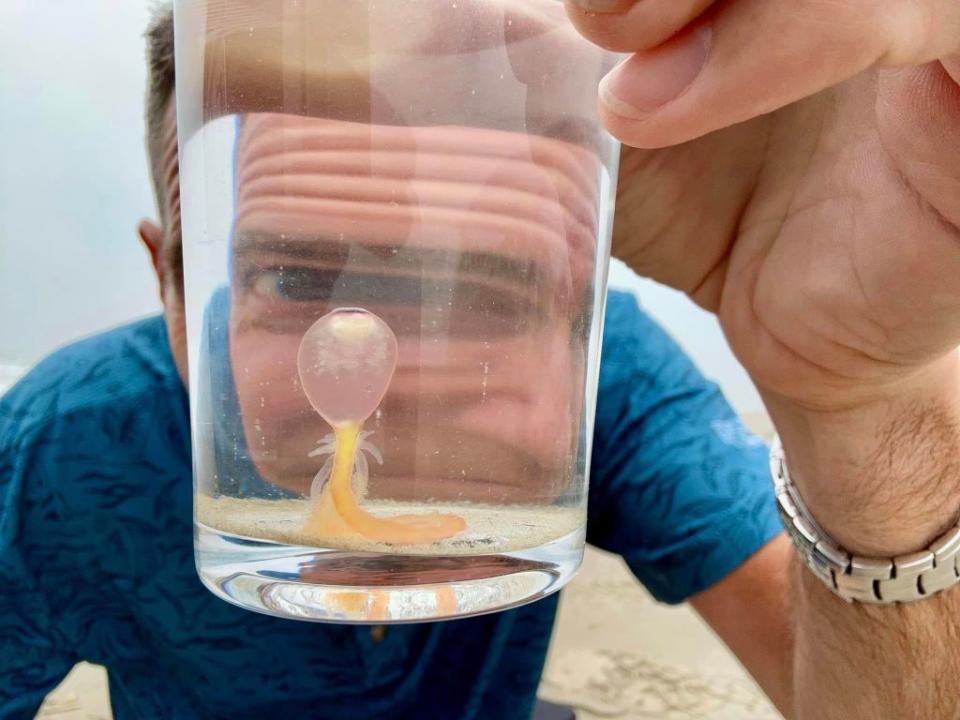Bizarre stinging ‘spaghetti monsters’ invade beach — experts warn to steer clear of them

Jeepers peepers.
Marine experts are warning beach-goers to avoid a mystery stinging critter following a string of sightings in Texas, which they detailed in
“We’ve had several reports of eyeball-looking creatures being found along the water line on Mustang Island [a barrier island on the state’s gulf coast],” warned Harte Research Institute for Gulf of Mexico Studies.
Accompanying pictures show one of the scientists holding one of the freaky flotsam, which indeed resembles a disembodied eyeball.
They analogized the gelatinous entity to “The Flying Spaghetti Monster,” the signature deity of the Pastafarians, a satirical religious sect that originated in opposition to teaching intelligence design in schools.

As it turns out, these sea peepers — whose “eye” is actually a gas-filled float — are organisms known as Rhizophysa or thread jellies.
Despite their name, they’re not true jellyfish but rather a siphonophores, a colony of animals living as one.
Perhaps the most famous example of these colonial creatures is the Portuguese Man Of War, a sapphire-blue critter known for its lighter fluid-esque sting.
Much like their cobalt-colored cousins, Rhizophysa also packs a helluva “sting,” per the post.
“If you see these floating up on the beach, just admire their creepy beauty, take photos, but don’t touch, unless you want to feel the pain of the eyeball from the sea,” the institute warns.

Also known as bathyphysa conifer, these retinal doppelgangers can grow to 131 meters long, making them one of the world’s longest animals.
However, they’re rarely seen as they prefer to roam the depths of the ocean.
Thread jellies aren’t the only dangerous entities to wash ashore in the Lone Star State recently.
Earlier this month, blue dragons — a resplendent-looking stinging mollusk known as “the most beautiful killer in the ocean” — invaded the Texas coastline, bungling plans for many spring breakers.

